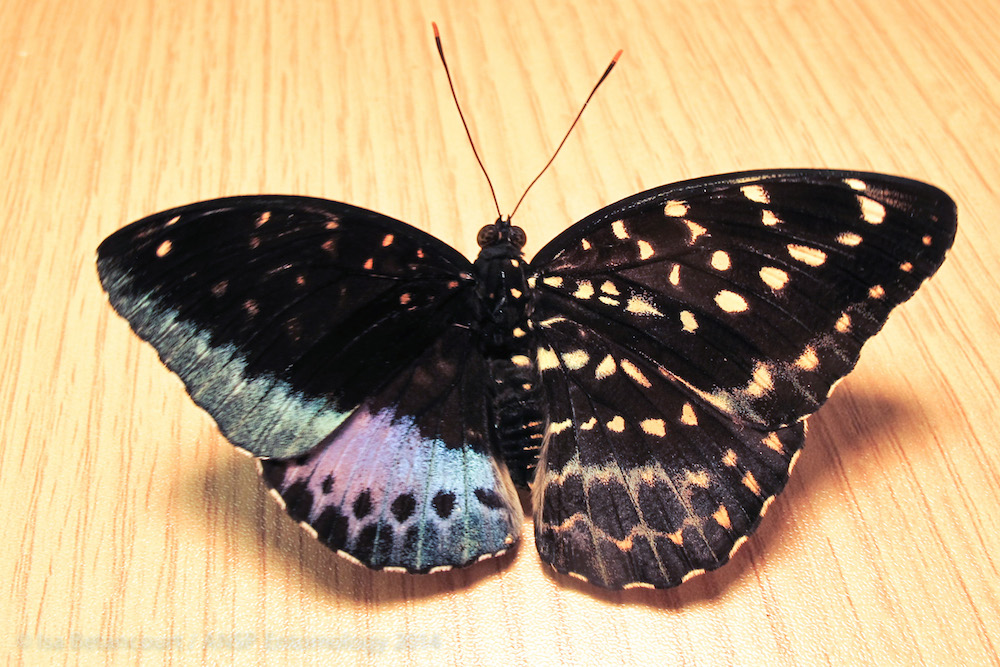Rare Butterfly Is Half Male, Half Female

An unusual butterfly that is half male and half female recently caught the eyes of a volunteer at a butterfly exhibit at Drexel University in Philadelphia.
Chris Johnson, a retired chemical engineer from Swarthmore, Pennsylvania, was volunteering at the exhibit when he stumbled across the unusual sight.
Johnson noticed that the insect's two right wings were typical of the females of its species — they were larger, and brown with yellow and white spots. But its two left wings were smaller and darker, with splashes of green, blue and purple, a pattern characteristic of males.
"I thought, somebody's fooling with me. It's just too perfect," Johnson said in a statement. "Then I got goose bumps." [Image Gallery: Stunning Dual-Sex Animals]
Johnson spotted the creature while emptying out the butterfly exhibit's pupa chamber, where the insects hatch from their chrysalises and cocoons. "It slowly opened up, and the wings were so dramatically different, it was immediately apparent what it was," he said.
Johnson and his supervisor, exhibit coordinator David Schloss, isolated the butterfly and contacted Entomology Collection Manager Jason Weintraub.
A butterfly expert later confirmed that the remarkable insect was a Common Archduke butterfly (Lexias pardalis) with a rare condition called gynandromorphy, which means outwardly having both male and female characteristics. (This is distinct from hermaphroditism, in which an organism has both male and female reproductive organs, but has external characteristics of one gender.)
Get the world’s most fascinating discoveries delivered straight to your inbox.
The condition is most commonly noticed in birds and butterflies, whose two sexes can have very different coloration, Weintraub said. It can occur when the sex chromosomes fail to separate during cell division in early development, a process known as nondisjunction. As a result of this failure, some of the animal's cells have a female genotype, and others have a male genotype, giving rise to an animal with both male and female characteristics.
Because gynandromorphy can be easily overlooked in species in which the two sexes look similar to each other, scientists don't know how rare the condition is.
The butterfly that Johnson found is a member of a species belonging the family Nymphalidae, commonly known as "brush-footed" butterflies, and it lives in tropical rainforests of Southeast Asia. It was shipped in October 2014, in a group of pupas from a sustainable butterfly farm on Penang Island in Malaysia, according to the academy staff.
Differences between the males and females of any species result from a process called sexual selection, in which one gender (usually females) select mates of the other gender based on the presence of certain traits, which become passed from generation to generation over thousands of years.
The rare butterfly was preserved and pinned, and will be on display at the Academy of Natural Sciences of Drexel University for visitors to see from Jan. 17 through Feb. 16, the academy staff said.
Editor's Note: If you have an amazing butterfly photo you'd like to share for a possible story or image gallery, please contact managing editor Jeanna Bryner at LSphotos@livescience.com.
Follow Tanya Lewis on Twitter. Follow us @livescience, Facebook & Google+. Original article on Live Science.



